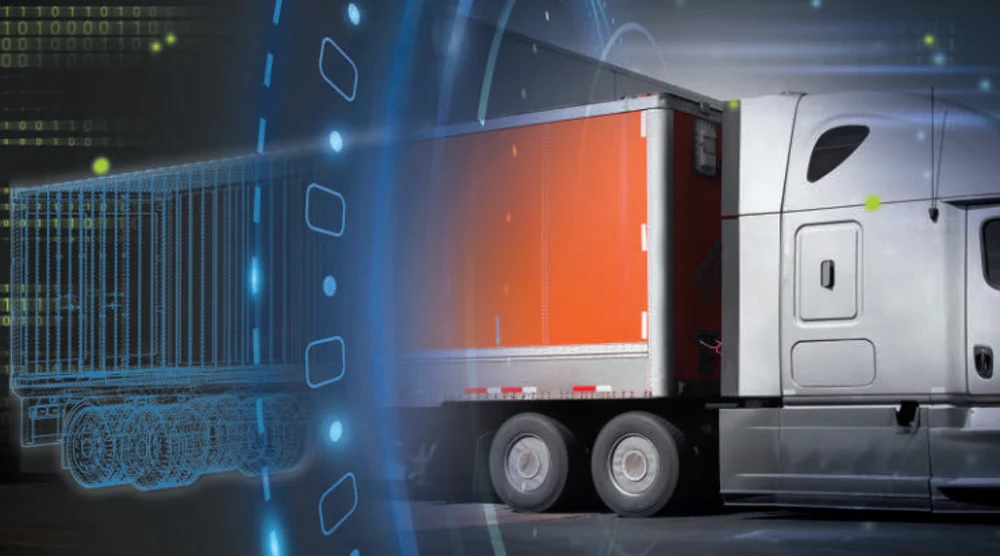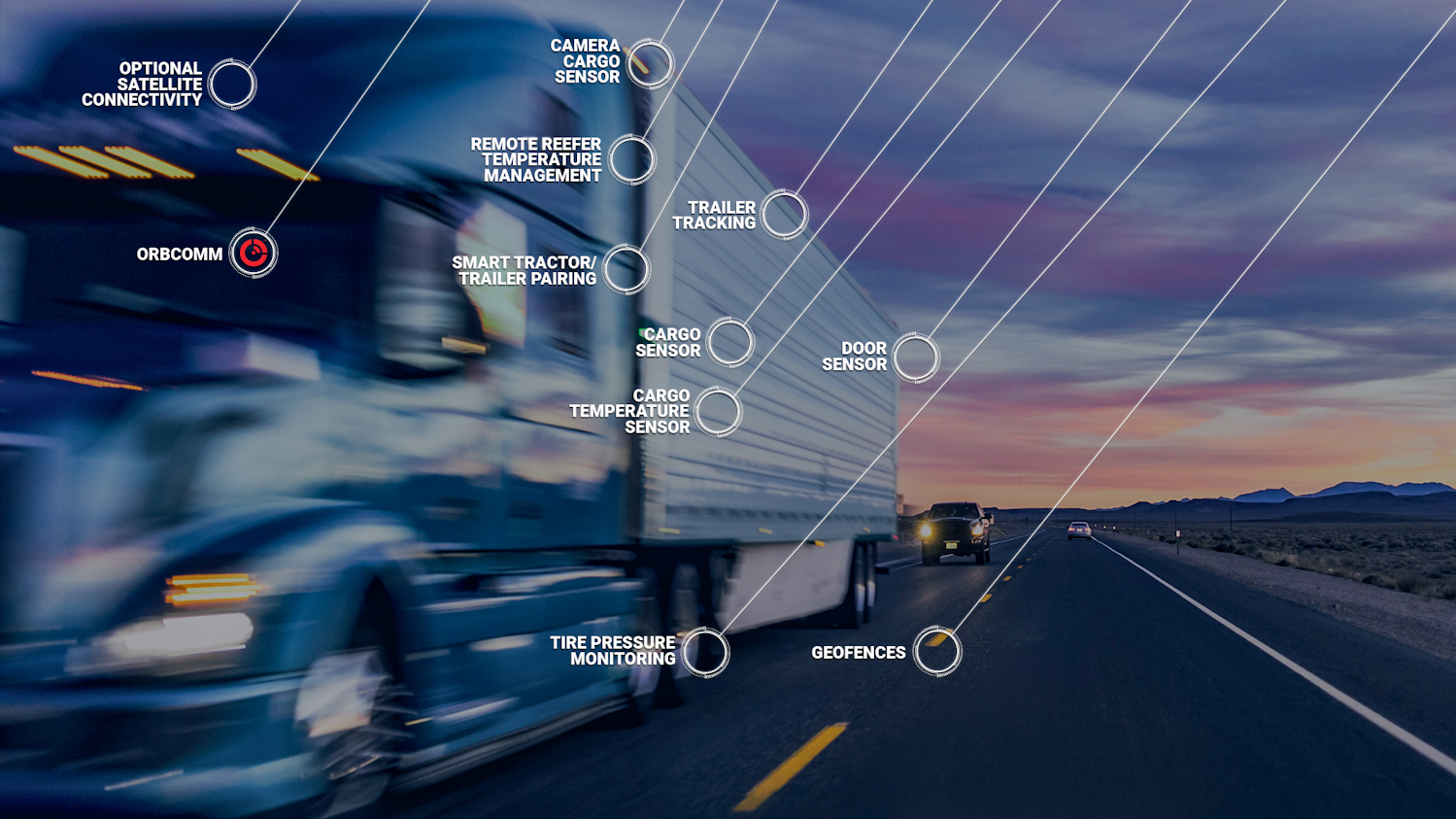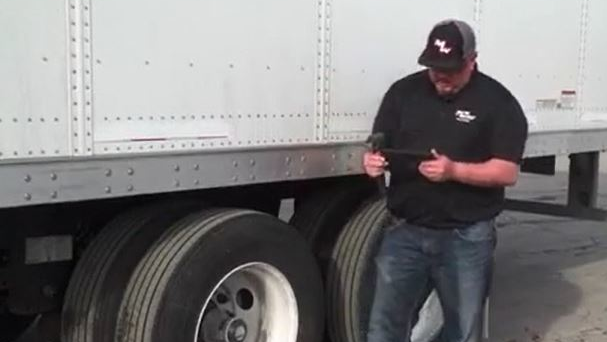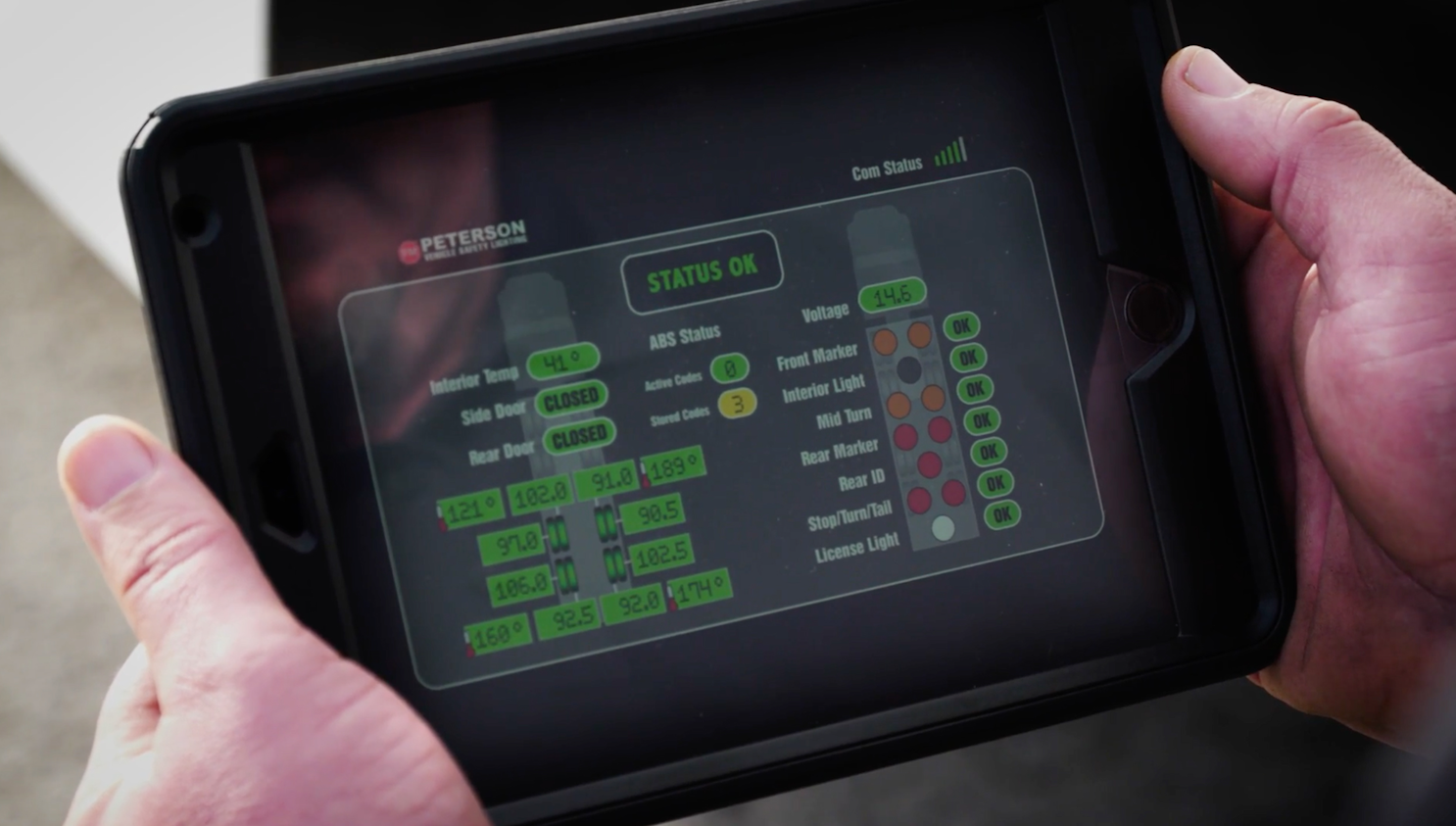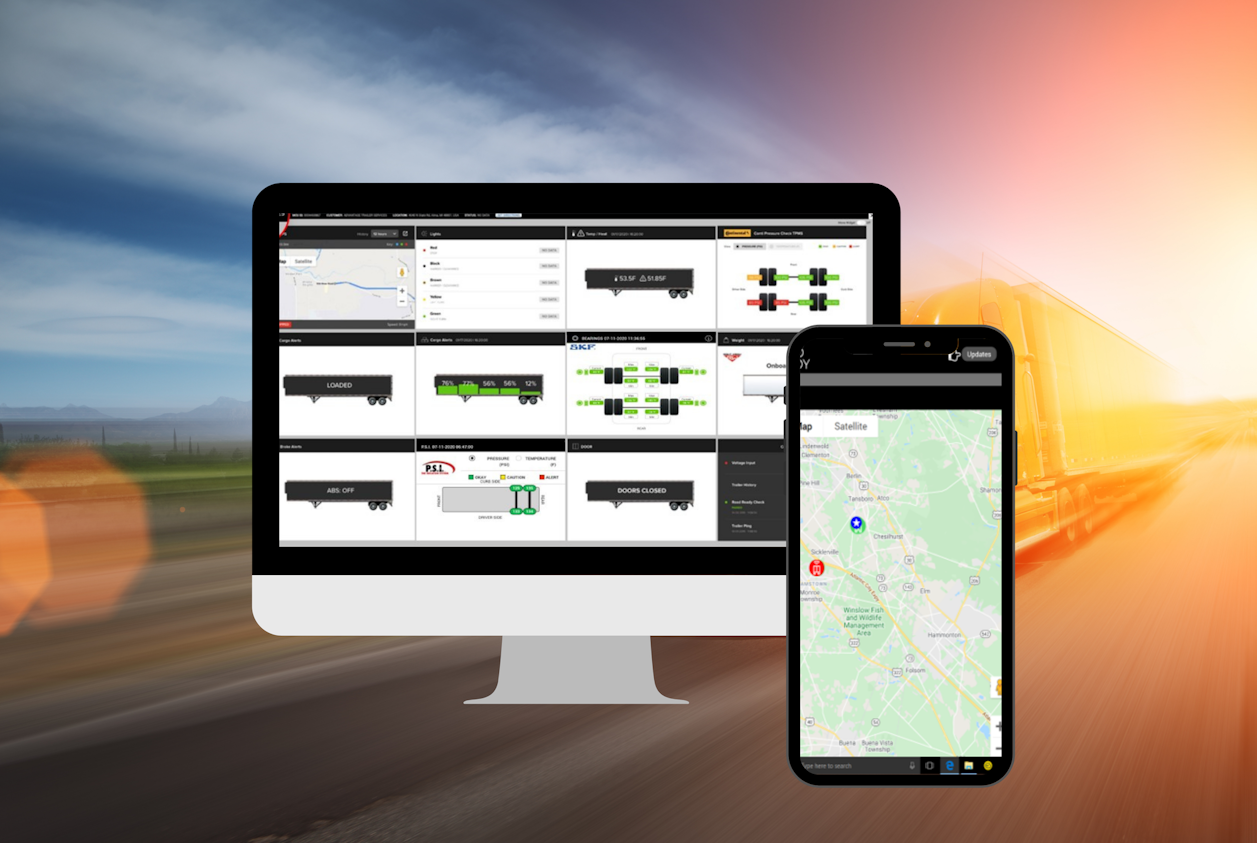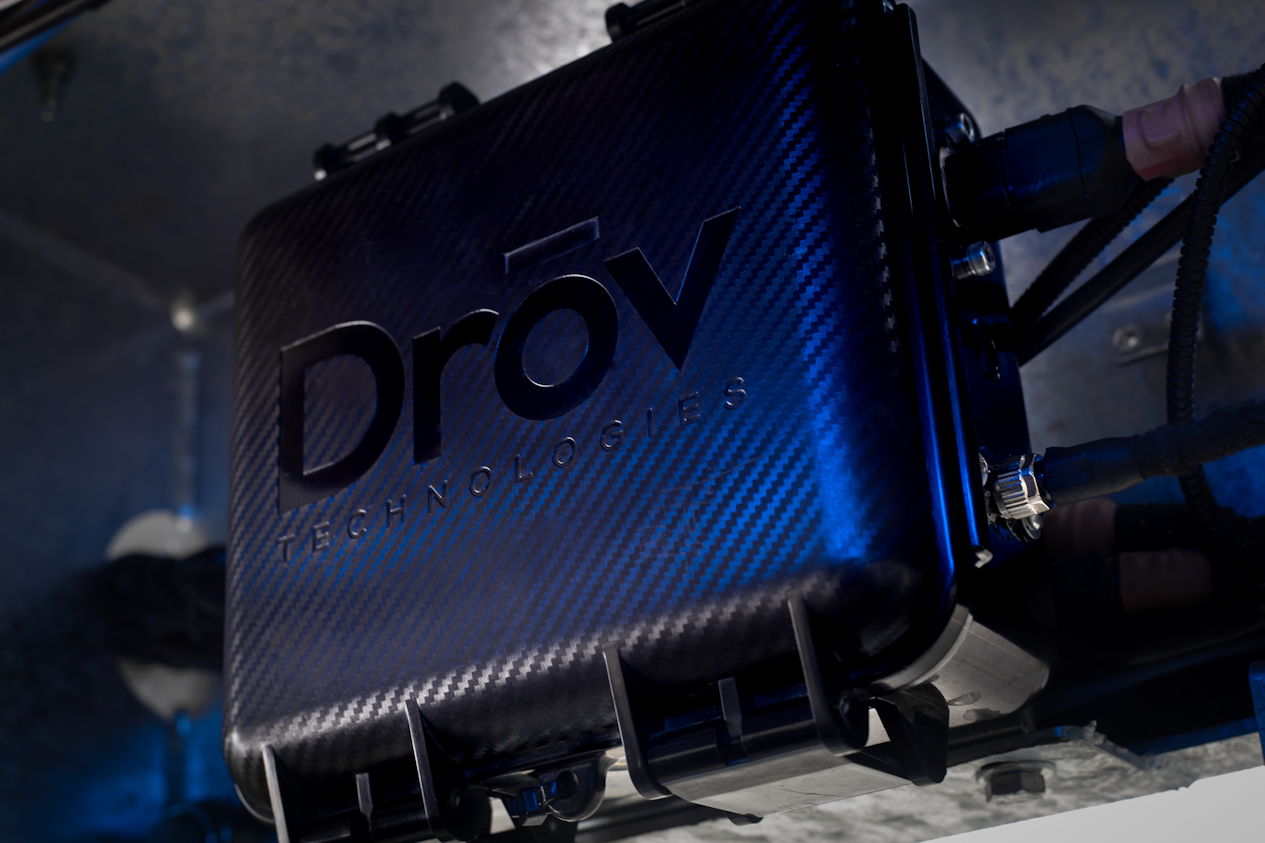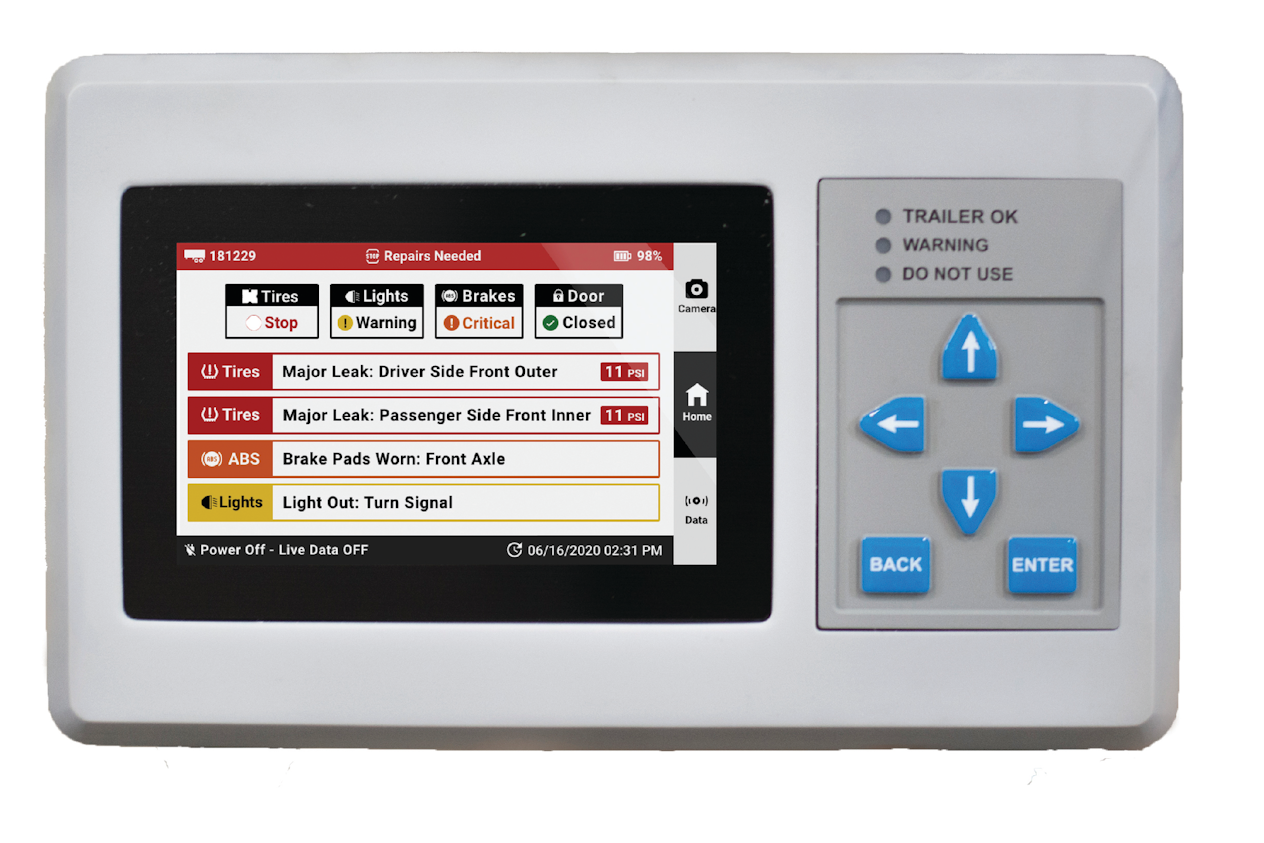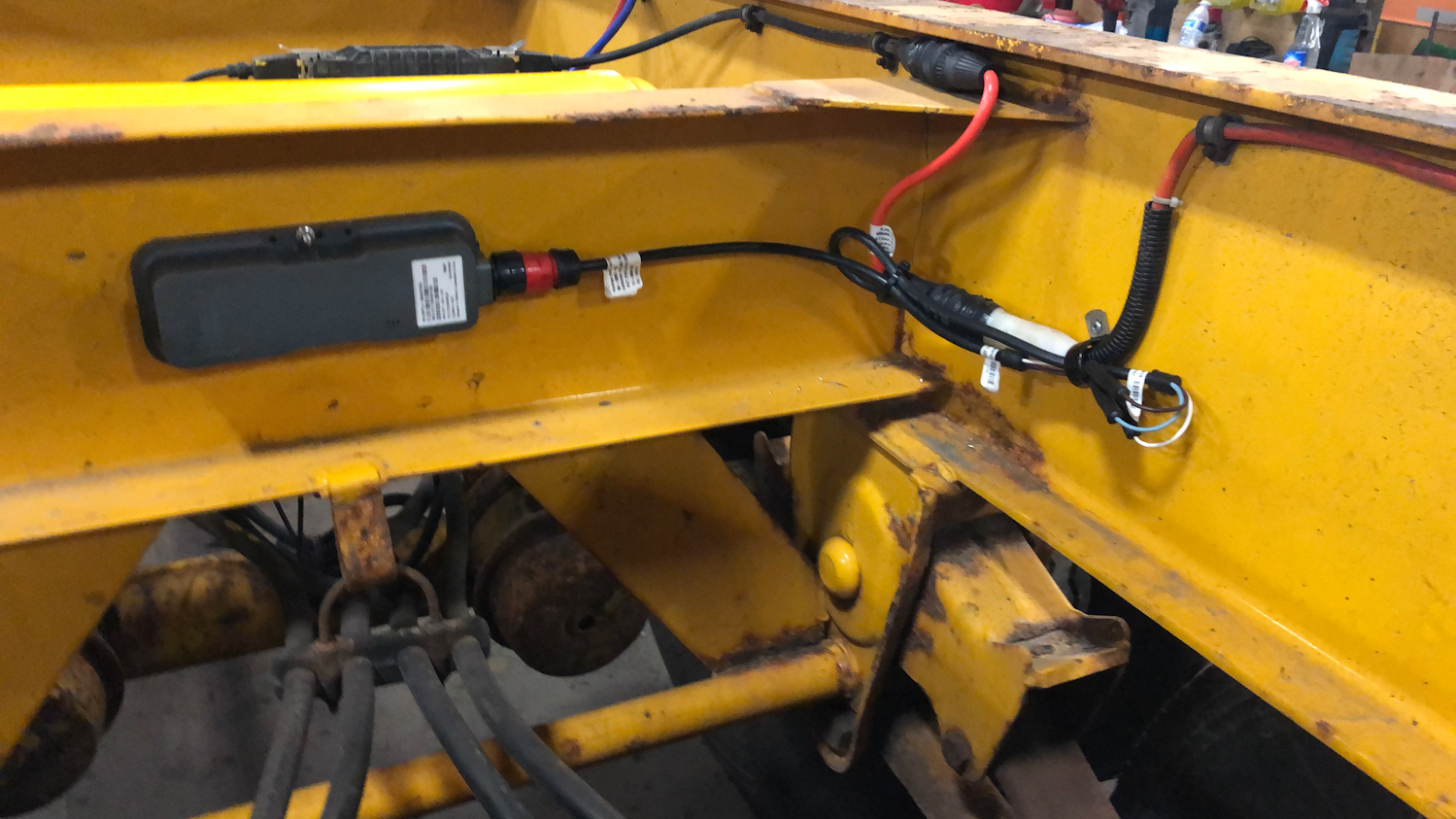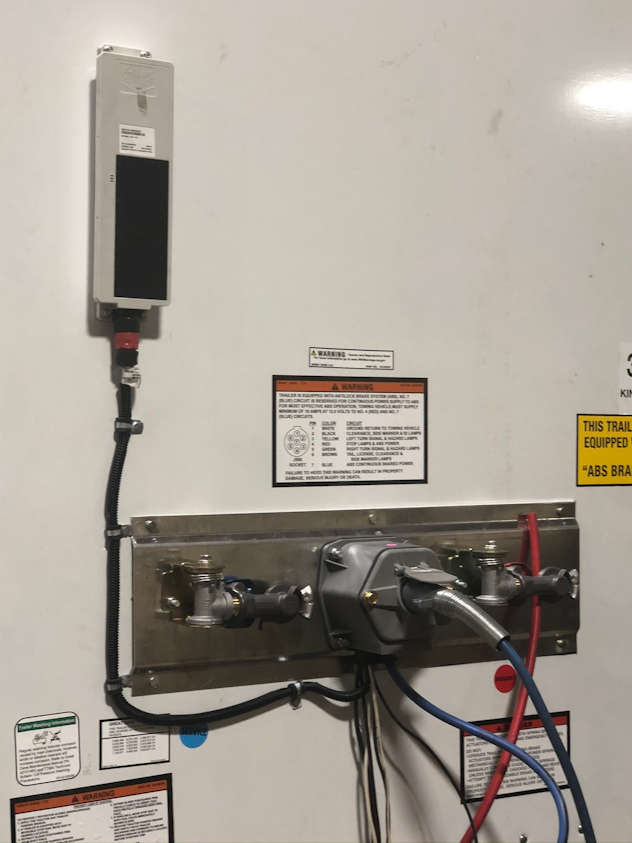As trucking rolls into the high-tech 21st century, more advanced trailers are gearing up to make fleets more efficient, safer, and smarter.
Everything is getting smart these days: From smart kitchen appliances to smart doorbells and watches. Trucks and trailers are getting smarter, too. After spending most of the 20th century slowly implementing new technology, the trucking industry is leaning into the smarter, technology-rich 21st century. Trucking’s smarter future is safer, more efficient, and profitable because of its potential to make fleets smarter.
“A smart trailer is a trailer that really talks to you,” Nada Jiddou, EVP of Clarience Technologies and general manager of Road Ready, told FleetOwner. “It is a trailer that knows its current state. It knows its systems and its operation, health, and status at any given point in time. It is also able to communicate that to the fleet—or the operator—comprehensively with a complete data set.”
Just having telematics on a trailer doesn’t make it smart, Jim Epler, EVP of Phillips Connect, told FleetOwner. “The difference between a trailer and Class 8 truck is you can’t just plug an ECU into a trailer and it churns out all the faults,” he said. “A trailer has to be able to tell you its health without that.”
While a PLC reader can note some faults on a trailer, he said, a smart trailer has many other sensors that can give fleets a better view of its health.
“A smart trailer is providing you the health of the trailer to be able to proactively warn against issues that the fleet might incur while the trailer is either stationary or in motion,” Epler noted.
Chris MacDonald, SVP of global transportation at Orbcomm, pointed out that this actionable data is nothing new. Cars have had “check-engine” lights for years that tell drivers they should take their vehicle to a mechanic. But those dashboard instrument lights on cars are vague—noting a problem, not specifying it.
“In this situation, a smart trailer provides you with better visibility of how you’re running that asset,” he told FleetOwner. “It helps you maximize your utilization, keeps your trailers operational, and really helps you improve the overall efficiency of your asset.”
A standard 53-ft. dry van trailer could have 20 to 25 federally required lamps on it, according to Ross Froat, VP of engineering and government affairs for Peterson Manufacturing.
“Then you have four wheel-ends, and then you have four sets of brakes, and then there’s eight sets of tires that are standardized through their manufacturer for pressure systems, temperature systems,” he said. “Plus, they are making sure that everything works—in some cases—20 years after you buy the trailer.”
“Good maintenance programs for trailers lead to safety on the road,” Froat told FleetOwner. “It always comes back to safety because the trailer is the leading cause of CVSA violations and ‘out of services.’ So, safety amongst all that is really important in how that trailer is reacting to the braking functions, to the stopping functions, and to the awareness functions, such as lights, as it goes down the road hauling 80,000 lb., doing 70 mph.”
The future is near
Data is going to develop more rapidly over the next five to 10 years, Orbcomm’s MacDonald predicted. “Everyone is getting into the ‘smart business.’ Whether it’s fridges, TVs, or coolers, all the appliances now are ‘smart,’” he said.
“As the smart trailer expands, my belief is you’ll be able to monitor a lot more than just brakes, lights, tires, doors, weight, fuel, reefer temperature—all those things,” he added. “Camera technology is really going to grow incredibly over the next cell cycles. You’re going to see OEMs come out with cameras. We have a camera now that we can look inside the trailer to monitor percentages of bulk and monitor cargo as the trailer is going down the road. It gives you real-time visibility into what’s happening with your assets. As these types of technologies evolve and become a little cheaper, it’s going to make much more data available.”
Autonomous and electric fleets are going to need smart trailers, Clarience’s Jiddou said. “For electrification to be effective in the industry, trailers must be smart,” she explained. “The minute you solve the battery issue, you come into the range issue. Range is a calculation; it’s predictive analytics. It takes in data, and it spits out range. And to have a complete set of data, you must have intel on the trailer: What’s the tire pressure? What’s the load status? How much load do you have in there? How are you going to bring all those parameters together in order to drive range?
“The future is smart. The future of supply chain is digital. It starts with smart sensing—to smart trailers, to smart tractors, and the integration of the two to generate a smarter fleet, which then creates a smart supply chain,” she added. “That future will then power autonomous driving as well.”
Jiddou said two things will drive the trucking industry to “collectively be smarter: That is electrification, which will force us to know a lot more about the state of every component we have, and autonomous, which to me will go hand-in-hand with electrification.”
In five to 10 years, fleets will be relying on 5G networks, electrified tractors, and more autonomous trucks, Jiddou added. The smart trailer is just one big part of that connected, smarter future for trucking. [See also: Older trailers face and equipment face 3G sunset.]
The future of smart trailers is “more sensors,” according to Phillips Connect’s Epler. “I don’t think tires are going away, and air systems aren’t going away.” But those systems and TPMS are going to get more advanced, he said, adding there will be a lot more embedded technology.
Startup autonomous trucking companies such as Kodiak Robotics want their tractors and trailers “to operate nearly 24/7 at peak safety,” Don Burnette, Kodiak Robotics’ co-founder and CEO, told FleetOwner in June when the company announced a partnership with Bridgestone Americas. The tire company made a minority investment in Kodiak and is integrating Bridgestone’s smart-sensing tire technologies into Kodiak’s autonomous trucking platform.
“Eight years from now, there’s going to be a lot of autonomous trailers on the road,” Epler said. He and his team at Phillips can design smart trailer harness retrofits for the trailers pulled by autonomous tractors. Both the tractor and the trailer will be packed with technology.
“You want to put cameras and sensors and ultrasonic and lidar and radar everywhere on these trailers,” he said. “We just design the harness. They install it and it plugs in, just like on your truck.”
Similar to what Kodiak and Bridgestone are designing, smart tire technologies can collect data and track whether weight is evenly distributed among truck and trailer wheels and axles, Burnette explained.
“Weight distribution plays a critical role in vehicle dynamics, controllability, maneuverability, and thus safety and vehicle performance,” he said. “Kodiak can also use data collected from the smart-sensing tire technologies to optimize autonomous driving operations to minimize wear and tear on tires.”
‘Only the beginning’
“We don’t know what we don’t know about the future,” Lisa Mullen, CEO of Drōv Technologies, told FleetOwner. “Tire management is the beginning—but only the beginning.”
Because the future is promising but uncertain—and trailers can stay in use for 20 years—Mullen said that Drōv CTO Peter Jankowski might have “over-engineered the IoT board” on the AirBoxOne, Drōv’s smart trailer technology platform.
“But we’re using every communication portal,” she said of the system, which offers at least eight data interfaces, including J1939, CAN, Wi-Fi, Bluetooth, Zigbee, and more. “We had to put on there what we know we need now and also what we might need in the future, so we didn’t stop with just Bluetooth or Wi-Fi.”
Jankowski has been working on adding new features to Drōv’s smart trailer system. “We just added ultrasonic sensors to the back of the trailer for backing up—just like in your car,” he told FleetOwner, “and a rear-view camera. Besides a cargo camera inside the trailer, we’ve also got a rear-view camera just like when you’re backing up in your car, you can see behind your trailer.”
He said systems such as a rear-view camera could help fleets attract newer drivers.
“Trailers are kind of like the forgotten asset sometimes,” Jankowski said. With supply chain constraints for trailers—and other equipment—looking to extend deep into at least next year, trailers are becoming “more coveted and taken care of a little bit more,” he added.
It’s more important than ever, he noted, for fleets to know where their trailers are and how they’re being used. And to get the most out of that equipment comes with making trailers smarter because it increases preventive maintenance.
“Keeping the asset utilization is really key, but also extending the life of the trailer and making sure that’s on the road for longer periods,” Jankowski said. “You are seeing that with cars right now—people are getting cars and keeping them longer. I think the same thing will happen with trailers because those things are going up in price; they’re not going down in price. Just adding some smarts to a trailer will pay you back in spades.”
Smart trailers will need to continue to integrate all the critical components on a trailer with improved edge computing, according to Justin Garver, FleetPulse sales manager at Great Dane.
“Smart trailers will eventually need to be able to recognize everything a professional driver would recognize as a potential issue and be able to communicate that to the tractor for us to realize an autonomous future,” he told FleetOwner.
In the next five to 10 years, Garver sees “the integration and communication between truck and trailers being the major improvements moving forward. It is a must that the critical data being collected on trailer components makes its way to a driver or autonomous power unit to take corrective actions in real-time.”
Smart as standard
While many vendors are looking to provide smart trailer retrofits, the smart trailer could become standard for all manufacturers by the end of this decade, according to Bill Hicks, SAF product manager for SAF-Holland.
“This technology is on a fast track; it isn’t a fad or some short-term industry trend,” he told FleetOwner. “The ROI value proposition with the added safety benefits are simply too strong to ignore. Catching just one major trailer road event could pay for a system’s upfront emergency service, downtime, and avoid possible fines and even worse litigation costs.”
Plus, the smart trailer space is getting crowded, Orbcomm’s MacDonald noted.
“Over time, I think the OEMs are going to have to stand up and agree on a universal communication path,” MacDonald said. “And when that happens, I think you’ll see this be much more OEM-driven. Everybody is getting away from the hardware, and we’re all doing things based on a software play. A SaaS model is really where a lot of this is headed. I think you’ll see a much more significant play on the OEM side as this goes forward.”
Orbcomm, for example, is partnering with the new Hyundai SmartSense trailer system. More OEMs will offer their own IoT systems, he said. “Where they offer it to customers for free for a few months—like XM Radio when you buy a car,” he added. “Then fleets will see they can’t live without it.”
Finding that “universal communication path” that MacDonald mentioned will be critical to future trailers.
“Many of our fleets have said, ‘We really want one platform, we do not want five, we don’t want four, and we don’t want three or two. We want one platform to be able to accept all of this data,’” Drōv’s Jankowski said. “I think that’s where it’s headed—even more than just reading data—more sophisticated applications are going to come on the market.”
As autonomous freight movement becomes more sophisticated, trailer technology will need to grow with tractor technologies. “Fleets need to take the long view in terms of where they want to get to in the next five years or 10 years in terms of technology,” Drōv’s Mullen said. “So the opportunity might not be that you put the fully instrumented trailer together today, but make sure you choose a company and a platform that can take you there when you’re ready.”
Mullen said she tells her fleet customers looking to retrofit equipment that maybe they should start with something basic. That could be focusing on safety or tire management, or temperature sensing. “But as you add capabilities onto your builds, you’re able to do that and still be supported under the same platform and you’re still supported by the same company.”
Peterson Manufacturing’s Froat noted that the trucking industry will see technology regulation changes that also help drive this adoption. Smart trailers, he said, complement current technology, such as electronic logging devices, and emerging technology, such as automated driving systems. A big reason is they make tractor-trailers safer—whether there is a driver in the cab today or it’s a driverless tractor in the future. For a futuristic autonomous fleet with no driver or an owner-operator that eschews automated driving systems, “smart trailer technologies can still support you in a lot of different ways.”
“Smart trailer technologies can support your mission, goals, wherever you decide, because you need that communication to know all the safety components are in operation, in status OK, for roadside [inspection] to trust your equipment to keep going,” Froat said.
By Josh Fisher
Source: https://www.fleetowner.com/


